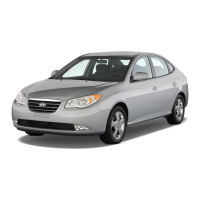
Do you have a question about the Hyundai 2009 Elantra and is the answer not in the manual?
| Brand | Hyundai |
|---|---|
| Model | 2009 Elantra |
| Category | Automobile |
| Language | English |
Provides guidance on navigating the owner's manual structure and symbols.
Details fuel types, octane, and warnings against alcohol/methanol content in gasoline.
Offers precautions for the first 600 miles to optimize vehicle performance and life.
Explains the function of the Event Data Recorder (EDR) in capturing vehicle data during crashes.
Lists and explains various warning and indicator lights on the instrument cluster.
Identifies interior components with numbered labels and page references.
Illustrates and labels instrument panel components with corresponding page numbers.
Details adjustments for front and rear seats, including headrests and armrests.
Covers seat belt usage, restraint system effectiveness, and proper positioning.
Explains the components and operation of the vehicle's advanced airbag system.
Information on key identification, operations, and warnings regarding ignition key usage.
Explains the operation of the lock, unlock, trunk, and alarm functions.
Details the armed, theft-alarm, and disarmed stages of the vehicle's security system.
Describes operating door locks from inside and outside the vehicle, including child-protector locks.
Covers operation of power and manual windows, including auto-up/down and lock features.
Explains the operation of the sunroof and sunshade, including warnings.
Explains the function of power steering and potential operating symptoms.
Describes how to adjust the steering wheel for driving comfort and entry/exit.
Covers adjustment of day/night mirror and electric chromic mirror features.
Details adjustment and folding of exterior mirrors, including warnings.
Explains how to adjust the intensity of the instrument panel lighting.
Describes the function of the speedometer and tachometer gauges.
Explains the engine coolant temperature gauge and warnings about overheating.
Details the fuel gauge operation and low fuel warning light.
Explains the functions of the odometer, tripmeter, and trip computer for driving information.
Lists and explains various warning and indicator lights on the instrument panel.
Indicates estimated driving distance based on fuel level and consumption.
Calculates average fuel consumption based on total fuel used and distance.
Shows average vehicle speed from engine start to ignition off.
Explains the purpose and behavior of the airbag warning light.
Describes the ABS warning light and its implications for system function.
Covers seat belt warning light and chime operation for driver and passenger.
Warns when tire pressure is significantly low, indicating a need to stop and check tires.
Lists and describes the tools stored for emergency tire changing.
Provides crucial instructions for safe vehicle jacking during tire changes.
Step-by-step guide for removing, replacing, and tightening lug nuts on a flat tire.
Describes fixed rod, glass, and satellite antennas, including removal and installation.
Explains the functions of steering wheel audio controls like volume, mode, seek, and presets.
Provides warnings and precautions for using external USB devices with the vehicle's audio system.
Explains how to connect and operate USB devices with the PA710S audio system.
Explains how to connect and operate an iPod with the PA710S audio system.
Explains how to use XM satellite radio functions for the PA710S system.
Covers pre-drive checks like visibility, tires, leaks, and pre-start procedures.
Explains the functions of the ignition switch positions: LOCK, ACC, ON, START.
Provides step-by-step instructions for starting gasoline engines in manual and automatic transmissions.
Details the operation of the 5-speed manual transmission, including shift patterns and reverse.
Explains the operation of the 4-speed automatic transaxle, including shift lever positions.
Covers power brakes, brake failure, disc brake wear, rear drum brakes, and parking brake operation.
Explains how to set, increase, decrease, and cancel cruise control speed.
Offers suggestions for driving style and vehicle maintenance to improve fuel economy.
Provides advice for hazardous conditions like snow, ice, mud, and includes instructions for rocking the vehicle.
Offers suggestions for minimizing winter driving problems, including snow tires and chains.
Covers essential tips and safety rules for towing trailers, including hitches and safety chains.
Details tire and loading information, vehicle capacity, seating, towing, and cargo capacities.
Explains the function of hazard warning flashers for emergency situations.
Provides troubleshooting steps for when the engine fails to start or starts slowly.
Details the procedure for jump-starting a vehicle with a discharged battery, including safety warnings.
Outlines steps to take if the engine overheats, including checking coolant and belts.
Explains the TPMS, low tire pressure telltale, and malfunction indicator.
Provides instructions and safety warnings for changing a flat tire.
Covers towing procedures, including recommendations for service and cautions for vehicle transport.
Identifies key components under the hood of the gasoline engine.
Emphasizes the importance of proper maintenance and owner's responsibility.
Lists routine checks for the owner to perform, categorized by frequency.
Outlines normal and severe usage maintenance schedules and intervals.
Provides a detailed schedule of required inspections, cleaning, and replacements based on mileage and time.
Details how to check the engine oil level and when to change the oil and filter.
Covers checking coolant level, recommended coolant types, and changing the coolant.
Explains how to check brake/clutch fluid levels and warnings regarding fluid handling.
Provides instructions for checking the automatic transaxle fluid level.
Details how to check and maintain the windshield washer fluid level.
Explains how to check the parking brake stroke and its ability to hold the vehicle.
Describes the air cleaner filter and the procedure for replacing it.
Explains the function and replacement of the climate control air filter.
Covers wiper blade inspection and replacement procedures.
Provides guidance on battery service, dangers, recharging, and reset items.
Covers tire care, inflation pressures, rotation, alignment, balance, and replacement.
Explains fuse types, replacement procedures, and warnings about improper fuse usage.
Details procedures for replacing various exterior and interior light bulbs.
Covers exterior and interior care, including washing, waxing, and cleaning.
Explains the vehicle's emission control systems and operating precautions.
Identifies vehicle identification numbers like VIN, certification label, tire specs, and engine number.
Provides contact information for Hyundai Motor America regional offices for customer inquiries.
Guides on how to report safety defects to NHTSA and Hyundai.
Lists the overall length, width, height, tread, and wheelbase of the vehicle.
Details the wattage for various exterior and interior light bulbs.
Provides specifications for tire sizes, wheel sizes, inflation pressures, and lug nut torque.
Lists recommended lubricants and fluids for the engine, transmission, brakes, and fuel.
Guides on selecting engine oil viscosity based on ambient temperature.
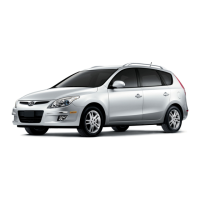
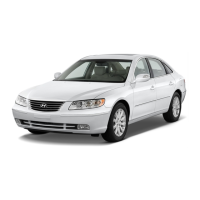
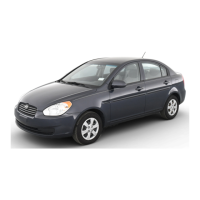
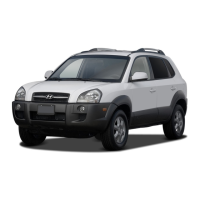
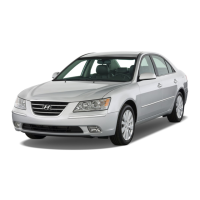
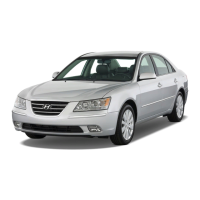


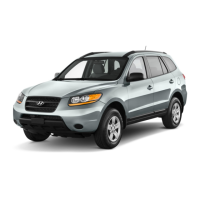

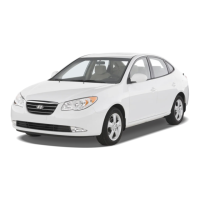
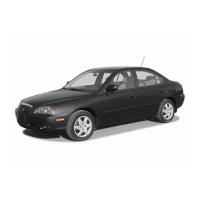
